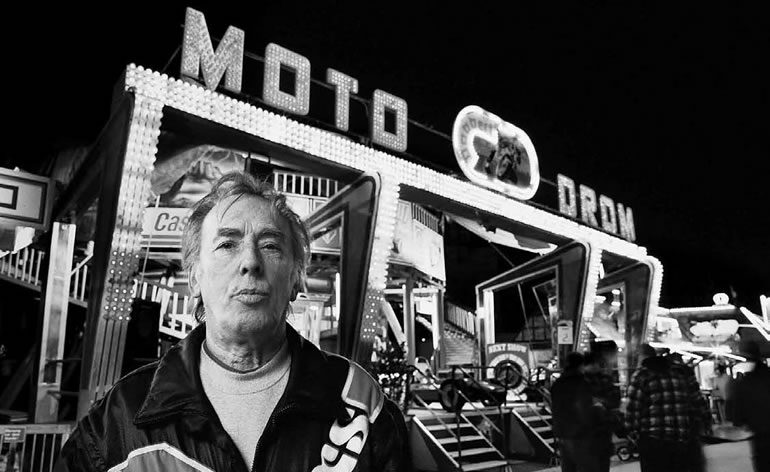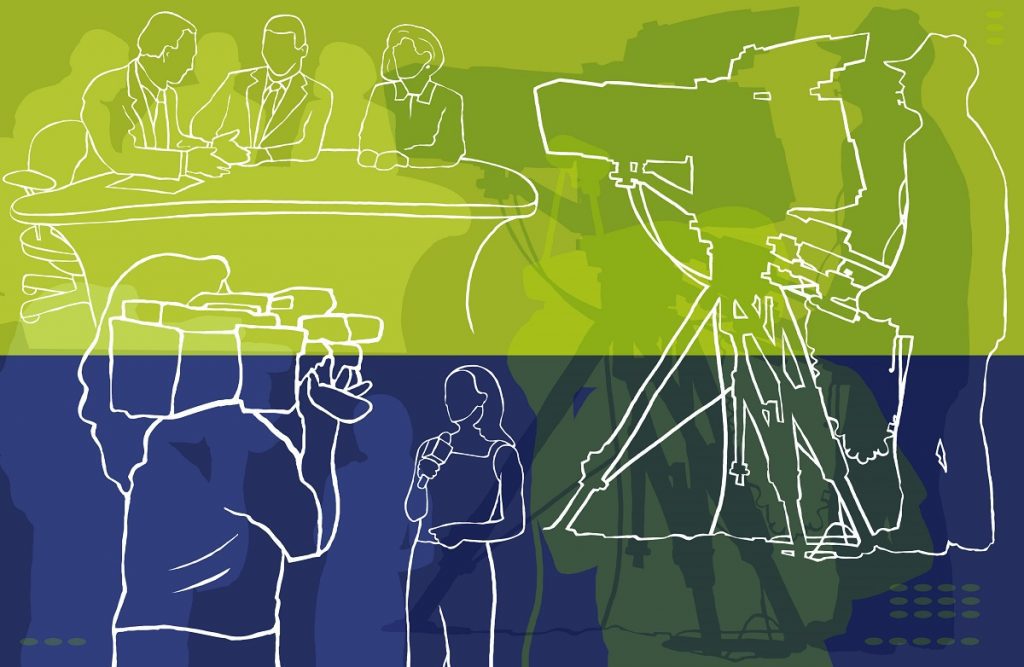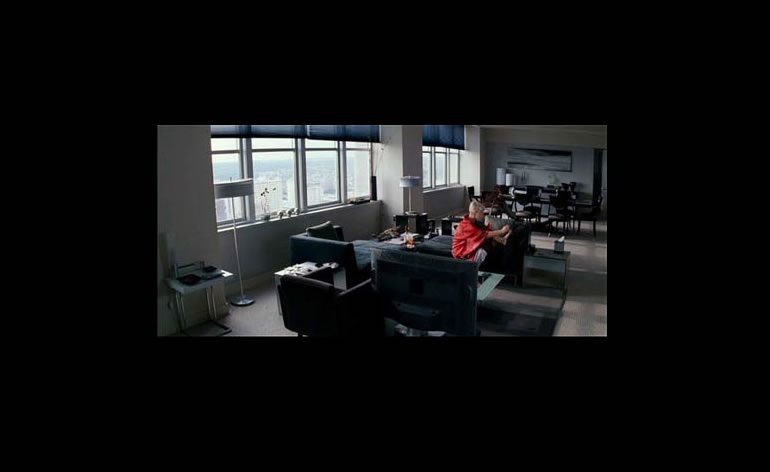Reference: StudentFilmmakers Magazine, May 2007. Joerg Wagner Captures the Wild Ride: Bikes, Speed, and Adrenaline: Award-Winning Writer/Director on Experimental Documentary, Motodrom. Interview by Jody Michelle Solis. Pages 18 – 20.
Writer/director Joerg Wagner talks about the making of his 9-minute experimental documentary, Motodrom, which won Honorable Mention for Short Filmmaking in the 2007 Sundance Film Festival. Wagner discusses shooting black-and-white, action, and stunts in this homage to the world of motor drome.
Where was Motodrom shot, and how did you decide upon the locations?
Joerg Wagner: Motodrom was mainly shot at a Hamburg fair called “Dom.” When I looked at the material, I developed new ideas for additional shots and camera angles, so we followed the guys from the motodrom to two other fairgrounds, the “Schützenfest” in Hannover and the “Pollhansmarkt“ at Schloss Holte.
How long did it take to shoot, edit, and complete Motodrom?
Joerg Wagner: Well, it took us about two years to complete Motodrom. It was a production with a low budget, and we had to stop working on it whenever someone from the team had a paid job. If we would have worked constantly, I think we could have done it in three or four months.
What kind of story did you want to tell with Motodrom?
Joerg Wagner: I didn’t just want to make a documentary about the motodrom; I wanted to create a kind of cinematic wall of death ride. I wanted to make the audience physically feel what it’s like inside the motodrom.
What was your budget, and how did you finance your movie?
Joerg Wagner: We had a total budget of about 50.000 euros. Fortunately, we had support from German film fundings.
The beginning of Motodrom shows the drome being built from the ground up over a period of time.
Could you describe how you created the time lapse effect, or what was entailed?
Joerg Wagner: Directly on the fairground area where the “Hamburger Dom“ takes place, there’s a big WW II bunker. We had two Super 8 cameras with telephoto lenses on top of the bunker, shooting one frame every ten seconds. Of course, it was a matter of luck that the motodrom was built up very near to that bunker.
Did you mount cameras to any of the motorbikes, cars or stuntmen?
Joerg Wagner: We actually shot a lot of material with cameras mounted on the bikes and on the car. It was part of the concept to show the POV of the rider in order to give the audience an idea of how it feels to ride in the wall.
Did you use special cameras or film stock to shoot B/W, action, speed, and stunts?
Joerg Wagner: The film was shot on 35 mm, Super 8 and Mini DV. My first idea was to shoot the whole film on Super 16 and then blow it up to 35. Unfortunately, it was impossible for the riders to perform with a Super 16 camera mounted on the bike. So we decided to use Mini DV lipstick cameras for the shots from the bikes. In addition, we used 35 mm for the slowmotion scenes and Super 8 for the fast motion sequence when the drome gets built up.
There were some shots looking up at the stuntment riding around the drome, which one might think could be very dangerous for anyone standing in the center of the drome shooting stunts involving motorbikes and cars. And then there was another shot looking down into the drome. What kinds of equipment did you use to capture these shots?
Joerg Wagner: The shots looking up at the stuntment riding around the drome were technically rather simple. Peter [Drittenpreis] was sitting on a swivel chair with the 35 mm camera on his shoulder going round and round, trying to keep up with the speed of the bike. He did a great job there. The topshot looking down into the drome was shot from a mini camera crane standing on top of the audience platform using a fisheye lens.
Would you say you have to be a specialist of sorts when working with B/W, action, speed, and stunts?
Joerg Wagner: All I can say is, when it comes to shooting action, speed and stunts, it is great to have a creative DP who likes trying new things and who is crazy enough to shoot from the bottom of a drome while three bikes running at breakneck speed around his head.
Peter Drittenpreis was the main DP on this project. We worked very close together. Whenever I came up with some crazy idea about cameras going round in circles he tried to make things possible. He is a creative guy.
At one point, a stuntman rides his motorbike using no hands, and drama is built up with the use of slow motion. Could you talk about this?
Joerg Wagner: I love slow motion. It’s one of the most beautiful things in film. In these particular shots I wanted to capture the beauty of this bizarre stunt entertainment. By reducing the speed, the rider is floating smoothly along the wall, and time seems to stand still for a short moment.
Was shooting with stuntment very dangerous for any crew or equipment?
Joerg Wagner: Of course, you try to keep the risk as low as possible. But when you are standing on the bottom of the drome and three guys are riding around your head, all you can do is simply trust them. We had total faith in them.
How many people were in your crew?
Joerg Wagner: On some days, when we did just Mini DV, there were, apart from the riders, only Peter, [Producer] Dirk Manthey and me. On other days, when we did 35 mm, used the crane or shot with sync sound, the team grew up to about 15 people.
What was the most difficult or challenging shot to get?
Joerg Wagner: There was one shot with two bikes that was really hard to do. We had a camera mounted on the back of [wall rider] Hugo’s bike. On the other bike, [wall rider] Jagath performed his acrobatic stunts. Hugo was the cameraman so to speak. He had to drive a few meters ahead from Jagath in order to catch him in the frame. Jagath was standing on the bike using no hands, and therefore, couldn’t control the speed of his bike. Hugo, on the other hand, could not see Jagath and had to keep the perfect distance to Jagath only by locating him acoustically by the sound of Jagath’s bike.
It was incredible, but it worked. Sad but true: in the end, this shot didn’t make it into the film. During the editing process, we realized that for dramaturgical reasons the shot didn’t really fit into that part of the film.
Did you use storyboards?
Joerg Wagner: Although I find storyboards normally very helpful, for this film it didn’t make sense. We were more like hunter-gatherers, experimenting with all kinds of different camera angles and seeing what we would end up with at the end of the day.
What was your most favorite thing about working on Motodrom?
Joerg Wagner: The most fascinating thing was to experience the everyday life of the motodrom guys. We soon became good friends with them, and at the end of the working day, we sat together with them in their trailer, talking and laughing for hours. We are still in contact with them and meet them whenever the show comes to Hamburg.
Any advice on how to get a short documentary in Sundance?
Joerg Wagner: When you shoot a film, don’t think about things like Sundance or Cannes or what the film should be like in order to get it into a big festival. Just concentrate on your work, and do the film exactly the way you want it.





